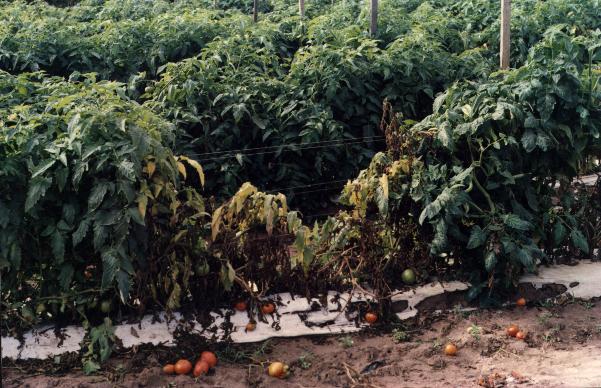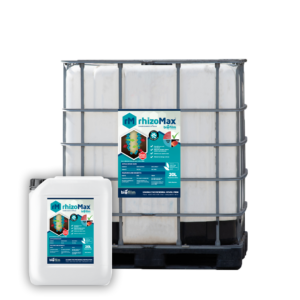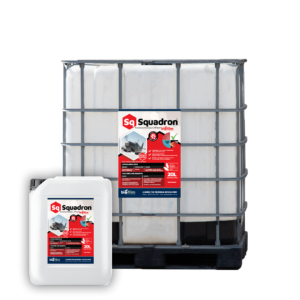
Beneficial bacteria may provide an effective and sustainable alternative to chemical pesticides and fungicides
Soil borne diseases are responsible for affecting crop production and yield Australia wide. The prevalence and severity of soil-borne diseases depends on various factors with the complex relationship between the host and pathogen greatly influenced by biotic and abiotic factors, often making disease prevention and control difficult. (Fiers et al., 2012)
Current consumer preferences and health concerns are driving demand for sustainably produced, organic crops (O’Mahony & Lobo, 2017) and consequently, many farmers are seeking alternatives to chemical pesticides and fungicides. Various alternative methods can be used to minimise the occurrence of soil-borne diseases, including the restoration of beneficial bacteria or fungi populations that would naturally occur in healthy soil but may have become depleted with the use of chemical pesticides and fungicides in the past. These beneficial bacteria and fungi can now be purchased in high concentrations biological liquid applications and applied in much the same manner as chemical products to quickly restore the natural balance in the soil and significantly reduce the presence of common soil-borne diseases. Most importantly, in addition to combating soil-borne pathogens, these biological inputs are shown to have a positive effect on overall plant health, crop yield and resilience.
As an example, Fusarium wilt is a common disease in agriculture and horticulture crops caused by Fusarium oxysporum f. sp. and can be a key limiting factor to crop yield and quality (Shen et al., 2015). Consequences of this disease include crop rot, blight, wilt, and cankers which can greatly reduce quality and yield of the infected crop (Ma et al., 2013). Fusarium spp. is a genus of filamentous fungi which includes many toxin-producing crop-pathogens that commonly affect agricultural crops. Fusarium spp. are able to colonise and survive in the soil for long periods of time making it very difficult to eradicate (Gogoi et al., 2020). Additionally, the fungi have developed a resistance to commonly used fungicides. Consequently, management and suppression of this disease has become more difficult through traditional methods and may require more unconventional methods of control.
Beneficial bacteria are a natural control method which can be used to address fusarium associated crop disease. Bacillus amyloliquefaciens is commonly used to fight soil-borne pathogens offering an economically viable solution to managing disease severity and occurrence. Several reports (Kim et al., 2017; Shen et al., 2015; Lingjuan et al, 2019) have demonstrated its efficacy in controlling soil-borne pathogens, including Fusarium spp Restoration of Bacillus amyloliquefaciens in the soil is an environmentally sustainable, safe, and long-lasting method for disease prevention which also significantly promotes plant growth, higher yields and increase plant biomass (Kim et al., 2017).
Pseudomonas fluorescens is a second biological option with proven efficacy against Fusarium spp. (Sharavanan et al, 2004) Pseudomonas fluorescens are commonly incorporated in agriculture and horticulture crop production in Australia to increase crop resistance to pathogen attack (Martinez, 2019) and are able to produce antibiotics to resist disease, rather than using sideophores for antifungal activity. Numerous studies (Ganeshan & Manoj Kumar, 2005; Martinez, 2019) have additionally found that when Pseudomonas fluorescens are incorporated into the seeds or seedlings of crops, crop development, root vigour, and plant growth are all notably increased (Martinez, 2019).

in a metabolite broth. See the product summary
for more details and application rates.

in a metabolite broth. See the product summary
for more details and application rates.
To successfully manage soil-borne diseases with biological inputs, it is important to take a preventative, not curative, approach. This means treating seedlings and rootzone prior to planting and during growth and applying the products prior to or shortly after conditions that typically lead to infection (such as warm and wet weather). Beneficial microorganisms, such as those used in the Biofilm biological products, tend to be very hardy however is each is better suited to different conditions, so it is always worth getting advice on compatibility with chemicals you are using, and climate and soil conditions.
Combining both efficacy in disease resistance with plant-growth promoting benefits, microorganisms such as Bacillus amyloliquefaciens and Pseudomonas fluorescens are a promising cost-effective, safe, and sustainable alternative to chemical pesticides and fungicides.
Each of these bacteria can be purchased in high concentration suspensions in a metabolite broth, as part of the Biofilm Crop Solutions range of agricultural microbiology products. See www.novumlifesciences.com.au/biofilm for more information.
References:
Fiers, M., Edel-Hermann, V., Chatot, C., Le Hingrat, Y., Alabouvette, C., & Steinberg, C. (2012). Potato soil-borne diseases. A review. Agronomy for sustainable development, 32(1), 93-132. doi:10.1007/s13593-011-0035-z
Ganeshan, G., & Manoj Kumar, A. (2005). Pseudomonas fluorescens, a potential bacterial antagonist to control plant diseases. Journal of Plant Interactions, 1(3), 123-134. doi:10.1080/17429140600907043
Gogoi, P., Kakoti, P., Saikia, J., Sarma, R. K., Yadav, A., Singh, B. P., & Saikia, R. (2020). Plant Growth-Promoting Rhizobacteria in Management of Soil-Borne Fungal Pathogens. In B. P. Singh, G. Singh, K. Kumar, S. C. Nayak, & N. Srinivasa (Eds.), Management of Fungal Pathogens in Pulses: Current Status and Future Challenges (pp. 1-13). Cham: Springer International Publishing.
Kim, M.-J., Radhakrishnan, R., Kang, S.-M., You, Y.-H., Jeong, E.-J., Kim, J.-G., & Lee, I.-J. (2017). Plant growth promoting effect of Bacillus amyloliquefaciens H-2-5 on crop plants and influence on physiological changes in soybean under soil salinity. Physiol Mol Biol Plants, 23(3), 571-580. doi:10.1007/s12298-017-0449-4
Ma, L.-J., Geiser, D. M., Proctor, R. H., Rooney, A. P., O’Donnell, K., Trail, F., . . . Kazan, K. (2013). Fusarium Pathogenomics. Annu Rev Microbiol, 67, 399-416. doi:10.1146/annurev-micro-092412-155650
Martinez, J. G.-G., M; Gómez-López, M; Faz, A; Martínez-Martínez, S; Acosta JA. (2019). Pseudomonas fluorescens affects nutrient dynamics in plant-soil system for melon production. Chilean journal of agricultural research, 79. Retrieved from https://scielo.conicyt.cl/scielo.php?script=sci_arttext&pid=S0718-58392019000200223&lng=en&nrm=iso
Lingjuan Han, Zeyu Wang, Na Li, Yonghong Wang, Juntao Feng, Xing Zhang,
Bacillus amyloliquefaciens B1408 suppresses Fusarium wilt in cucumber by regulating the rhizosphere microbial community, Applied Soil Ecology, Volume 136, 2019, Pages 55-66, ISSN 0929-1393,
https://doi.org/10.1016/j.apsoil.2018.12.011.
O’Mahony, B., & Lobo, A. (2017). The organic industry in Australia: Current and future trends. Land use policy, 66, 331-339.
Sharavanan, P. T & Muthusamy, Muthaiah & Marimuthu, T.. (2004). Effect of Pseudomonas fluorescens on Fusarium Wilt Pathogen in Banana Rhizosphere. Journal of Biological Sciences. 4. 10.3923/jbs.2004.192.198.
Shen, Z., Wang, B., Lv, N., Sun, Y., Jiang, X., Li, R., . . . Shen, Q. (2015). Effect of the combination of bio-organic fertiliser with Bacillus amyloliquefaciens NJN-6 on the control of banana Fusarium wilt disease, crop production and banana rhizosphere culturable microflora. Biocontrol science and technology, 25(6), 716-731. doi:10.1080/09583157.2015.1010482
